Roosevelt Island
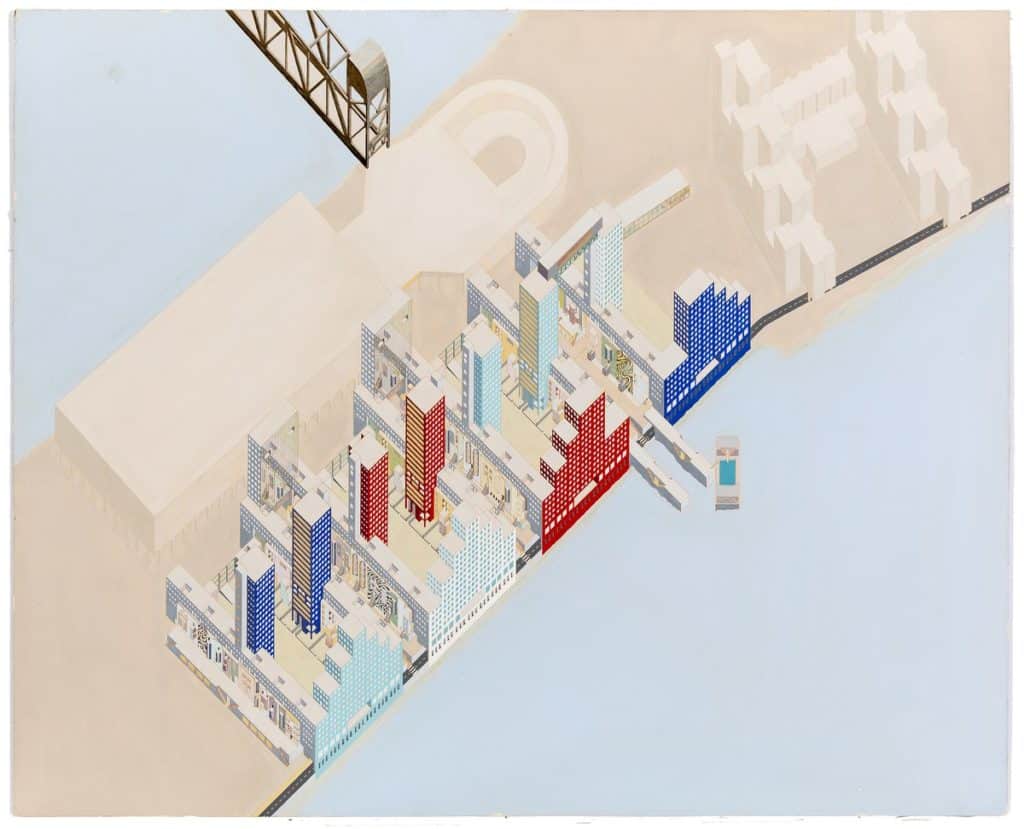
The Roosevelt Island competition was sponsored by New York State Urban Development Corporation for the urbanisation of an island in the East River of Manhattan. The city grid served as a formal generator for the building types, adapted with controlling geometry to the proportions of the island’s topography.
There are four small blocks directly on the waterfront, which I painted in the colours of the Dutch flag – a tribute to the ancestry of New York and FDR. Behind the blocks are rows of brownstone terraces, then the towers and finally the river block. On the main axonometric, the sidewalks extend to the East River forming piers with a floating pool, which docks on the south pier. The buildings have been constructed so they do not obstruct one another’s view. The terraces were designed in different shapes and materials – glass, rock, plastic, marble – and various colours. This made their rendering exciting for me as it corresponded to what Madelon and I subsequently taught at the Architectural Association, running the Colour Workshop. If I remember well, I painted the brownstones in watercolour to show the delicate difference of the materials. The rest of the painting was in acrylic.
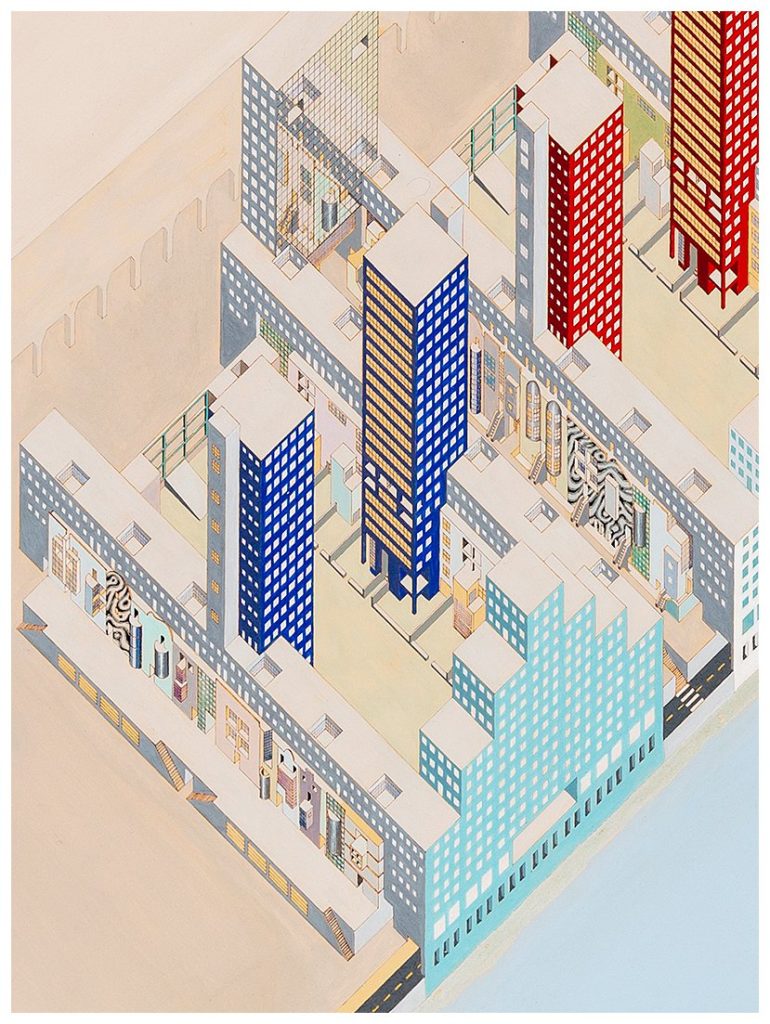
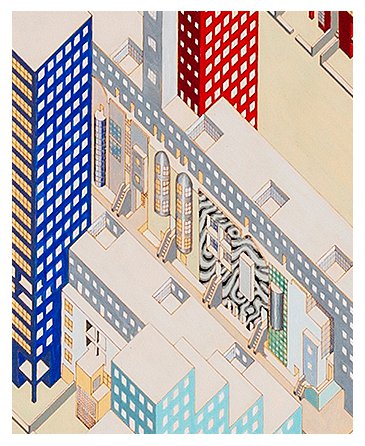
When we were running the Colour Workshop, Alvin Boyarsky, the head of the Architectural Association, inspired his staff to reach their highest performance. In turn, we were able to imbue this in our students. Alvin’s critical eye was watching closely the progress of both staff and students; he was our inspirational helmsman throughout his long career.
Madelon and I tried to show our students how to use watercolours, acrylic and oil – though the latter was rarely used because of the drying problem – and then how to paint shadows, reflections, glass, mirrors, metal, marble, wood, etc., and through this to convey mood, reduce or enlarge scale and intensify sensation. Buildings are not black lines on white paper.
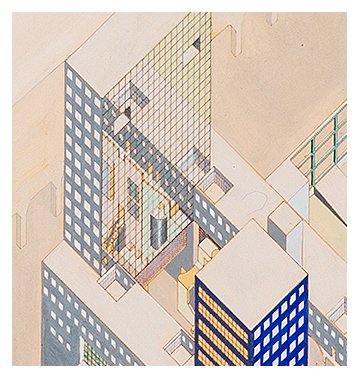
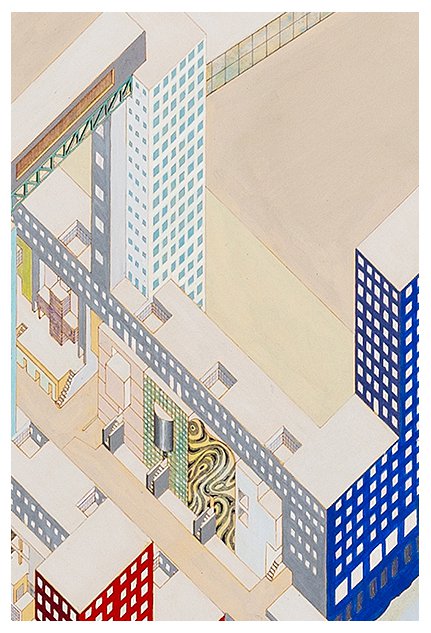
With Madelon, we painted Rem and Elia’s theories and fantasies. For a few years the office survived because of the sales of the paintings, exhibited in museums and galleries – the Museum of Modern Art and Guggenheim in New York, the Städelschule in Frankfurt, the Venice Biennale. Our Roosevelt Island entry did not win a prize but the project acquired a reputation later, after Pierre Apraxine bought the paintings I made for Time Magazine, for the Howard Gilman collection. These were subsequently bequeathed to MOMA in 2001.
When the office finally received commissions for buildings, we were not required to do paintings any more, as paper architecture no longer represented the reality of OMA’s work. Although we did more than one version of our paintings, we are now left with very few, unfortunately.
As soon as Madelon and I stopped working for OMA, we started teaching in the Communications Department of the AA. Its head was Denis Crompton of Archigram and the students could choose between doing photography, etching or life drawing. We taught there for twelve years and enjoyed every one; we were inspired by the students. Before Alvin’s death, he gave me two shows at the AA, which didn’t include my work for OMA. These seriously helped to start me on the painting career I’ve enjoyed since.
My paintings are influenced by my architectural experiences but they work differently as conceptual views of my own world of images. My affinity with architecture is thematic and goes into a genre that could be called pure fiction.
There are artists and architects with a tendency to repeat the past. OMA, and hopefully I, move towards the future, drawing inspiration from a state of perpetual change. Though OMA had not produced many projects when the Roosevelt Island competition was done, one can see that our aim was not to turn architecture into a style. OMA’s modernity tries to be a continuous state of transformation in a continuously shifting world. OMA’s paper architecture had such appeal because it represented ideas and imagination caused by our different backgrounds – the visual cultures of Greece and Holland mixed with our experience of living in Britain.
